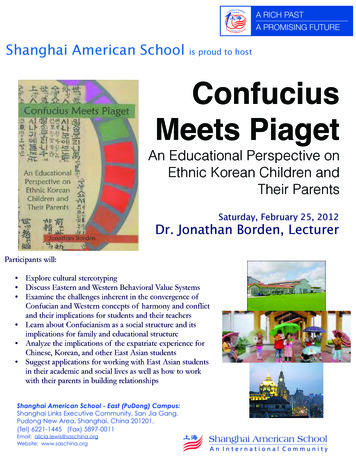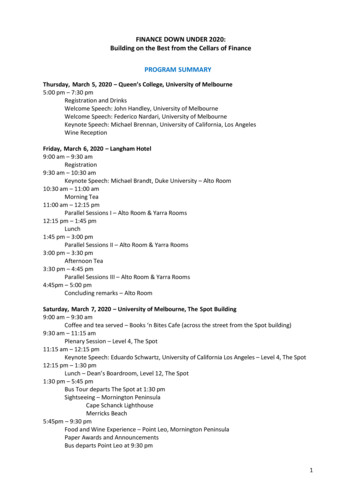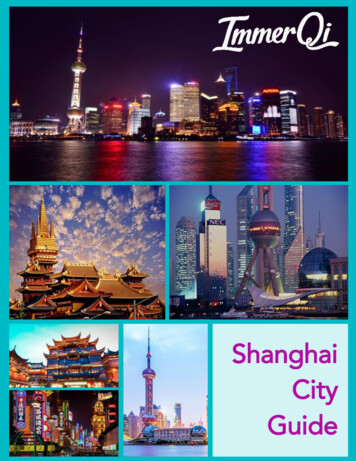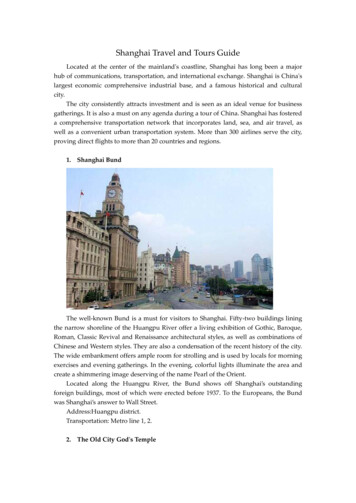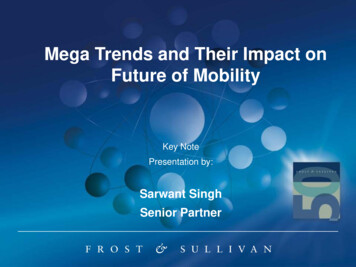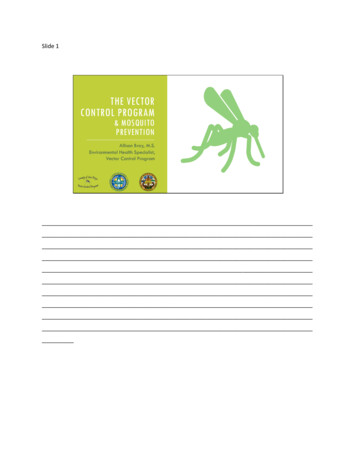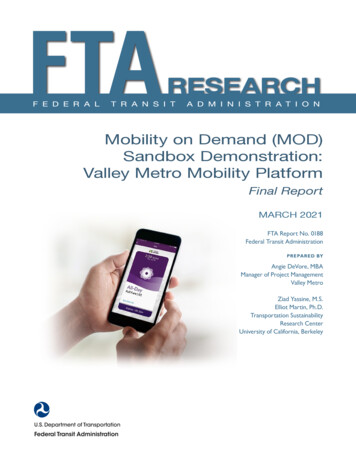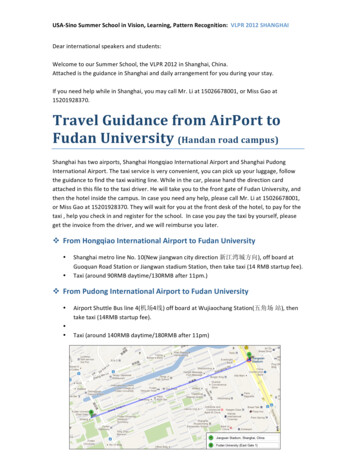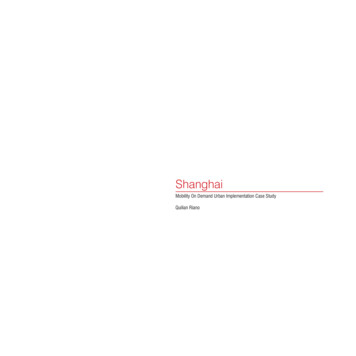
Transcription
ShanghaiMobility On Demand Urban Implementation Case StudyQuilian Riano
In the ten years to 2000, the length ofroads increased by 40 per cent, andthe number of cars quadrupled to justover one million. Official predictionsstate that by 2020 Shanghai will have2.5 million private cars, and that dailymotor vehicle trips will increase toseven million compared to just overthree million in 2000.
Shanghai87
Urban Morphology and TransportUrban MorphologyTransport SystemIssuesSCOOTERThe City is categorized by low-scalehigh-density housing called Li-long.Shanghai’s rapid development and itshighly valued downtown land resultedin every street facade reserved forcommercial activities. This can be expressed by an old Shanghainese saying: “An inch of space in the street frontage designates a life-time of fortune”.However, the prosperous commercialspace was challenged by great influxof migrants as to where to allocate thehuge population without interrupting thespatial continuity of commerce alongthe main street-facade? how to maintainShanghai’s first appeal as “ten miles ofcommercial streets”?In China, there are 1.8 bikes per family, yet municipal governments eager toencourage industrial growth repress bicycles in favor of cars.Mobility Issues in Shanghai include: Shanghai is currently congested andvehicular traffic is in the rise-Ralph Gakenheimer The Lilong housing style is currentlythreatened by newer developments1 million cars but two-thirds of private journeys in Shanghai are by twowheeled vehicles such as bicycles andscooters. Larger motorbikes have beenbanned in the historic center. Pollution becomes a major problemfor residential dwellings The ‘last mile’ for those traveling intothe historic center is problematic.In Shanghai, there are seven maintransport systems - bicycles, scooters,cars, buses, subways, trains, and watertransportation system.Shanghai today is facing rapid urbanization as the economic boom in Chinaroars on. The higher standard of living inShanghai means that many of its inhabitants want to own a vehicle. City governments are now encouraging higherownership of vehicles by setting forthpolicies that benefit large-scale infrastructure.BICYCLEShanghai is building 180km of dedicated bike lanes, especially in newly builtareas like Pudong, where bicycles willbe segregated from scooters.METROSince the mid-1990s, it has built an extensive metro system, with five lines,now used by 1.8 million people per day,and it is now planning six new lines.If it carries out all its plans, the lengthof the system will exceed London’s, theworld’s biggest.
Regional ShanghaiSUBURBAN AREAS7 suburban districts and ChongmingCounty (island)11 satellite cities of 200,000500,000 pop.22 large towns of 50,000-100,000pop.89
Shanghai Historical Growth18401885193719561997Shanghai is a large city with an area of7,037.50 km²Its population in 2008 wasapproximately 20 Million and thedensity of the city is approximately3,154 per km²Shanghai has around 1 million cars,but this number is rapidly growingBicycles are still the number 1 meansof transportation in the city. There arecurrently 14 million bikes in the cityand at 2003, it was estimated that thisnumber was growing at a rate of 1million bikes per year
Shanghai Transport Islands400 meter diameter / 5minute walk time frompublic transportationTransport Island911005010005003000
Case Study: Shanghai2 km5 km1005010050Transportation RadiiBike and ScooterPick Up and Drop OffMobility Hub with Cars,Bike, and Scooters1000500300010005003000
10 km93100500001000505003000
Lilong Housing Districts
Lilong Housing StyleDuring the Shanghai’s rapid industrialdevelopment there was a need for anew style of mass housing. That andand its highly valued downtown landresulted in every street facade reserved for commercial activities.The Challenge became how to houseall these new inhabitants while notinterrupting the spatial continuity ofcommerce along the main streetfacade. These districts are all withinthe study area for Shanghai, creatingplaces that would be good to placethe new transportation systems that.Lilong Housing Style PermutationsLilongs vary in size from 0.35 to 5.0hectares, its housing units are attached and are two or three storiedhigh. Furthermore, they have oneside lane at the front and anotherservice lane at the back. The wholesettlement has a couple of mainlanes running through the center,which are used as the major circulation passages, and are accessiblefrom the commercial streets. Theside lanes, leading to each housingunits, connect to the main lanes.The urban lay-out give privacy to theinterior while making a vibrant commercial street frontage possible.Although, the interior streets of theLilongs can create their own urbanexperience with interior commercialspace.Commercial / Public SpaceHousingPrimary RoadSecondary Road95
Working in the LilongIn this scenario the Lilong chosen is neara subway stop and has a lot of commercial activity within it. The cars would beplaced on the road, replacing roadsideparking, allowing for 3 times as manycars as were there before.The bikes and scooter would be placedinside the Lilong itself taking advantageof the population living within it. thecombination of these three transportation systems allows for maximum flexibility. Placing the new transportationsystem within the system also allowsthe Lilong to survive as an urban form.Similar economic pressures that created the Lilong are now endangering it, astaller buildings are replacing them. Partof the reason is the car boom Shanghaiis experiencing and the fact that theydo not provide much parking. This newtransportation gives the Lilong a newamenity that could make them a moreappealing housing choice.
Working in the Lilong97bike and scooterCity CarPublic Transportation25 m50 m
99
City gov-ernments are now encouraging higher ownership of vehicles by setting forth policies that benefit large-scale infra-structure. Issues . Mobility Hub with Cars, Bike, and Scooters Transportation Radii 2 km 5 km Case Study: Shanghai. 93 3000 1000 500 100 50 100 000 50 000 10 km.

